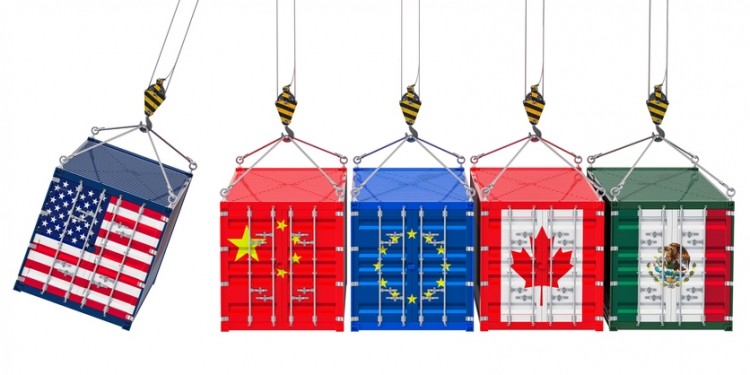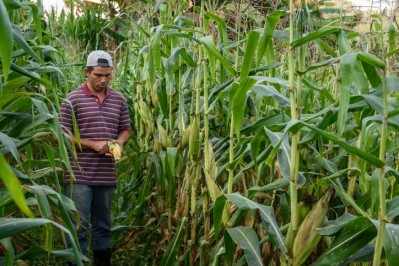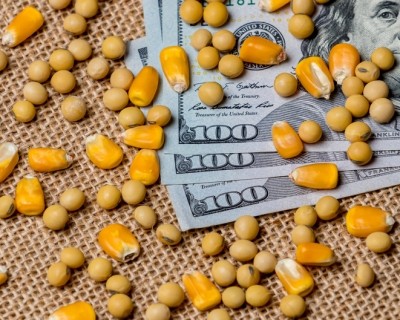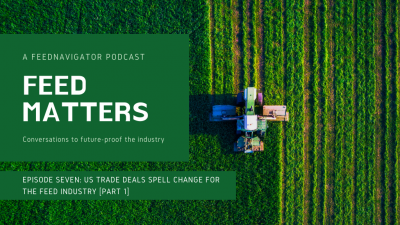US: Ongoing trade disputes cloud outlook for feed crop, grain producers

The Colorado-based CoBank released a forecast regarding factors facing the feed crop and animal production sectors in 2019 in a report earlier this month. The rural credit provider works with agribusinesses, rural infrastructure and agricultural producers across the US.
The start of the year did not bring the same optimism that 2018 saw, said Tom Halverson, president and CEO with CoBank, in the introduction to the report. “As we begin 2019, the economic mood of the country is warier,” he added.
Although the economy continues to perform, there are several factors causing anxiety about the “near-term future." These include that agriculture, as an export-dependent industry faces pressure from the ongoing trade disputes between the US, China and other trading partners and growth outside the US.
“Trade is the outsized risk, as the world’s two largest economies test each other’s willingness to accept economic pain,” added the report authors. “China’s cyclical peak was in 2017 and all signs point to continued slowing through 2019. If US tariffs are raised, China’s slowing will accelerate. And as goes China, so goes much of the rest of Asia.”
A deal between the US and China on trade policy is anticipated to “set the economic tone for the remainder of the year,” they said.
“If US tariffs on most Chinese goods rise to 25% from 10%, the economic picture will darken,” they said. “If a substantive deal is struck, the global economy could turn the corner.”
Trade factors ‘clouding’ feed, ag industry outlook
Three trade-related issues have to be addressed in 2019 to return a sense of “normalcy” to agricultural markets, the report authors said.
“Ongoing tariffs and trade negotiations continue to hang over the US ag economy with no clear sign of resolution, clouding agriculture’s trade outlook for 2019,” they said.
Those negotiations include the approval of the US-Mexico-Canada Agreement (USMCA), ending steel and aluminum retaliatory tariffs and improving the trade relationship with China.
Securing a legislative approval for the USMCA may be more challenging in 2019 based on the political division within Congress, they said.
As such, a final approval of the deal is not anticipated before the second quarter of the year.
It is harder to predict the potential end for retaliatory tariffs from Mexico and Canada, as it was not included in the USMCA deal, they said. A deal is anticipated in 2019, but it may not proceed until later in the year.
“The outcome of the 90-day ‘cease-fire’ with China will be the most pivotal event for US agriculture in 2019,” the authors said. “We expect some progress to be made by the March deadline, but a substantive deal that is acceptable to both sides will likely require more time.”
China reportedly offered to boost its imports of US products, which would provide support for agricultural exports, they said.
“Without this type of deal, exports to China will remain well below past levels when 2019 comes to a close.
“The US agricultural sector will aggressively attempt to develop alternative markets in 2019 to prepare for a sustained, smaller share of China’s agricultural purchases."
Although plans to build trade relationships with several countries, including Taiwan, Canada, Colombia, Mexico, the UK and Kenya, were announced by the US Department of Agriculture, expanding alternative markets to reduce reliance on China could be a challenge, they said.
Following Canada, China was the second largest market destination for US agricultural exports in 2017, said the report authors.
“As a result of the trade war, the value of total US agricultural exports in 2019 is expected to fall to $141.5bn, down $1.9bn YoY [year-on-year], according to USDA’s latest projections."
There also could be some impending difficulties for exports to Japan in 2019, they said.
The Comprehensive and Progressive Agreement for Trans-Pacific Partnership (CPTTP) trade agreement reduces Japan’s tariffs with several countries – but not the US.
Japan also is set to see the implementation of a free trade agreement with the EU in February.
In terms of overall exports, Japan is the fourth largest market for US agricultural products including in feed grains like corn and in indirect feed export through beef and pork, they said.
“The lack of certainty in trade policy on a number of fronts, combined with a resilient US dollar, makes for a discouraging export outlook for agriculture in 2019,” the report authors said. “Access to key markets will remain limited and downward price adjustments will persist, both hurting margins and opportunities for US agriculture.”
Facing international competition
At the start of the year, the outlook is for “intense competition” especially for feed and food grains, the report authors said. The majority of competitive pressure is expected to come from expanded production in South America and the Black Sea region.
“Merchants in these regions are aggressively attempting to wrestle export market share away from the US,” they said. “Foreign buyers will continue to seek out grain and soybeans from reliable origins that carry the lowest price tag and the least amount of market risk.”
Feed crop production has been increasing globally for several years, they said. However, large US supplies and the ongoing trade challenges with China have created an opportunity for producers in other areas.
“Brazil’s projected record crop, Argentina’s production rebound, and continued agricultural expansion in Eastern Europe will further inundate a bloated market,” the authors said. “In 2019, US market share will erode for corn and soybeans, and wheat’s market share will remain weak. Recapturing the loss in market share could take years.”
This interplay is anticipated to suppress prices for feed crops and grains through 2019 especially for producers focused on the export market, they said.
“Farmers facing low commodity prices will also likely seek out alternative crops including sorghum, cotton, barley, oats, and even industrial hemp,” they said. “Segregated crops like high-oleic soybeans, Enogen corn, and non-GMO crops may be on the table to increase revenues or cut costs as farmers compete with the financial realities of the current ag economy.”
Low feed crop, grain prices to continue
Commodity markets for feed and food grains continue to be depressed stemming from global supply and the ongoing trade disputes, said the authors. Feed grain and animal producers are anticipated to have the challenge of lower production costs while facing rising expenses.
“Farm production expenses in 2018 were at the highest level since the peak in 2014,” they said. “Further increases in 2019 would put production costs still closer to record levels but with no comparable increase in farm income on the horizon.”
Trade policy also contributes to the increase in expenses for producers, by increasing costs for investments for machinery and grain storage, they said. “With trade woes showing no clear sign of abating, the continuation of higher steel and aluminum costs will weaken farmers’ and ranchers’ ability to invest in their operations,” they added.
“Farmers cannot bank on a fourth consecutive year of above-trend crop yields to make up for low commodity prices and rising costs,” they said. “To steady the agricultural economy, and boost revenues, the sector is dependent on substantive breakthroughs in trade policy.”












